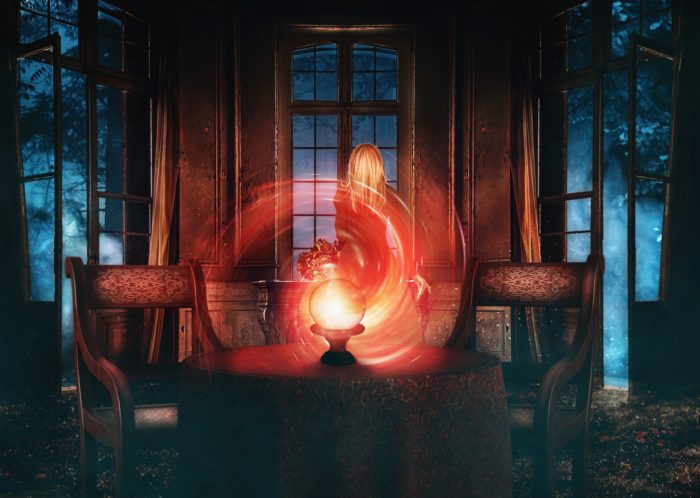An Orgy Of Fatuity
May 6, 2022 Category: American Culture
Postscript:
The abiding infatuation with New Thought serves to numb the critical faculties, inhibiting the ability to notice how daffy the beliefs truly are. It’s like Novocaine for cognitive dissonance. Consequently, the boundary between mindfulness and mindlessness becomes blurred.
This is all made to seem wonderful, as reassurances of “joy” and “love” and “healing” are repeated, as the occasion warrants. Mysterious things are said about the “soul” or the “spirit” or the “higher self”. Declarations are made about “being present”. Referring to “energy” in arcane ways is a nice, added touch.
If one wants to up the rhetorical ante, one might say something outlandish about the “transpersonal” and the “quantum” world—ensuring the gibberish is peppered with scientific-sounding terminology. This often includes some bogus locutions (like “the law of attraction”) and the mis-use of technical terms (like “manifestation” and “vibration”).
And so it goes. New Agers eagerly delve into everything from telepathy and Astral projection to chakra balancing and energy healing—as if the beguiling array of gimmickry will deliver them from the need to engage in serious deliberation. Since the idea is to “live your own truth”, contending with Reality is seen as a handicap. Why bother, when farce is so much more enthralling?
Avid practitioners insist that they are devoted to humanity…even as they do virtually nothing to contribute to human society. So after the Tarot cards, the astrology charts, the kombucha, and all the sham products from Goop, where does one end up?
Immersing oneself in a New Age milieu can be exquisitely fun. We are invited to serve ourselves to a sumptuous feast of enticing dogmas–a steady diet of superstition that satiates our longing for meaning. We allow ourselves to be mesmerized, and want to see others come along for the ride.
But one can only don so many magical crystals and spend so much time tapping into the Astral realm. Eventually, one recognizes the perils of credulity.
The question remains: What is the appeal?
Participation in this orgy of fatuity is a way to mask a spiritual emptiness. Indeed, New Thought is similar to conventional religion in that it serves as a spiritual prosthesis. For those contending with existential beleaguerment, or even existential destitution, dogmatic indulgences can offer succor.
And for those suffering from existential vertigo, New Age tenets offer a sense of purpose. Anyone who happens to be disoriented is looking for something solid to hold onto. Generally speaking, people need some sort of rudder when they feel lost at sea. A life-raft when adrift in a storm. A beacon to light the way in the fog. The smorgasbord of tantalizing dogmas found in the New Age repertoire offers such things.
Existential despondency afflicts us all at one point or another. It makes sense, then, that many are groping around in the dark, fumbling here and there, searching in for a sturdy memetic balustrade to which they might cling. In lieu of the Abrahamic Faiths, alternate dogmatic systems will often do the trick. One need only select a semiotic scheme that suites one’s palate.
New Age rigamarole has a peculiar allure, as it enchants as much as it consoles. Like religion, it can provide solace, and even (false) hope. This isn’t always a bad thing. There’s definitely something to be said for maintaining a positive mental attitude. The key is for optimism to not become delusional. Positivity is healthy insofar as one remains grounded in Reality. There is no cosmic “law of attraction”, only of cause and effect; as much as we might be tempted to engage in magical thinking.
New Age movements also create a sense of community, a role that religious observance often plays. A shared experience holds significant appeal. This is one of the most touted accoutrements of traditional religion.
Another perk of being a New Thought aficionado is that it enables one to pretend to be philosophically profound without having to be philosophical in the least. One need on transplant Abrahamic theology with newfangled esoterica. This way, vacuous verbiage can be passed off as wise disquisition; and every whim can be celebrated as epiphany. Such ersatz sagacity is tremendously gratifying for everyone involved.
But there are limitations. After all, one can only saturate one’s brain with the ramblings of Deepak Chopra for so long before one’s prefrontal cortex begins to atrophy.
In the final analysis, New Age thinking exhibits all the hallmark traits of cultic thinking. Submission is passed off as liberation. Fascination is misconstrued as edification. And intellectual integrity is sacrificed on the alter of open-mindedness.
New Age thought resembles religiosity in other respects. It propagates more by proselytization than by education. Participants spread the word via evangelism, then end up wandering around in an intoxicating delirium—like fugitives from Reality. In the end, they soon discover: Being a free spirit is all well and good; but not when it leaves one’s head in the clouds.


